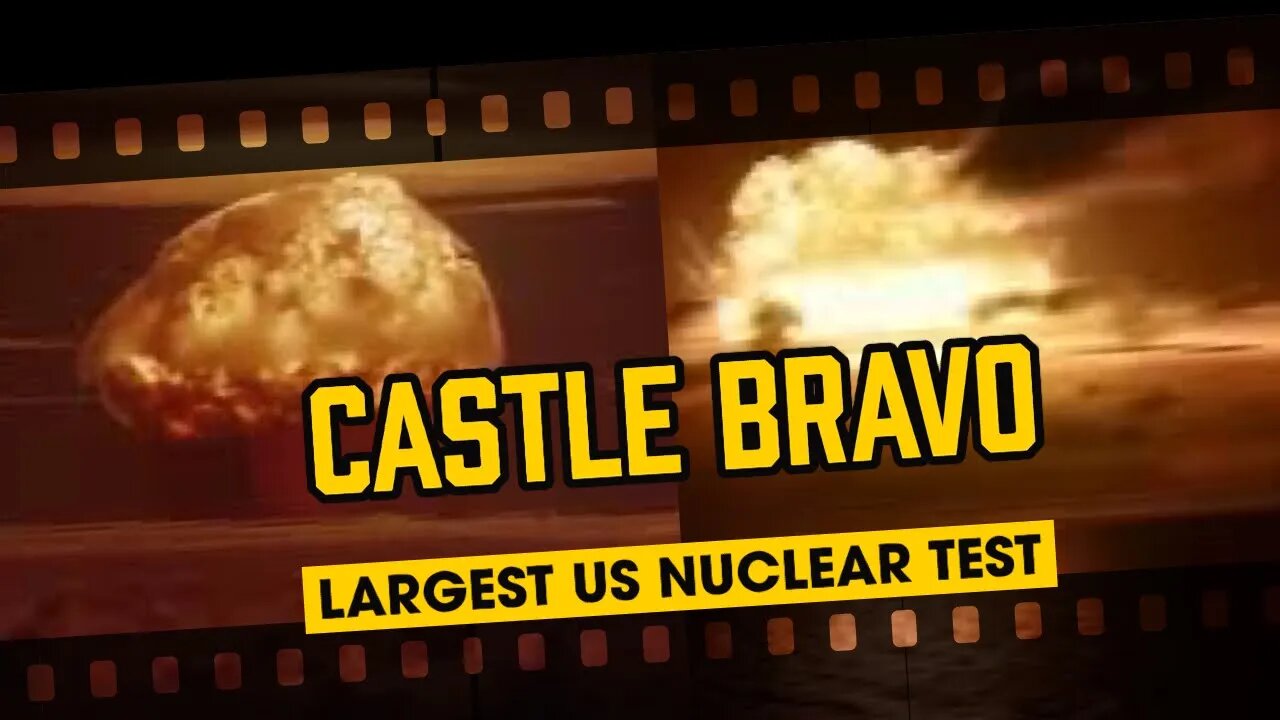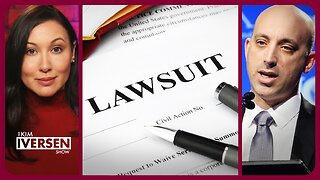Premium Only Content

Largest Nuclear Test in History | Castle Bravo Complete Footage
March 1st 1954, Castle Bravo, the largest thermonuclear device ever was detonated by the United States. The test was part of a larger operation for testing high-yield nuclear devices, known as Operation Castle, conducted by the U.S. Atomic Energy Commission and Department of Defense. The operation took place at Bikini Atoll, part of the Marshall Islands, used by the U.S. military beginning in 1946 for nuclear weapons testing research. While the test advanced thermonuclear weapons design, miscalculations about the yield resulted in the largest U.S. nuclear contamination accident.
The United States tested its first thermonuclear device, known as Ivy Mike, two years earlier in 1952, also in the Marshall Islands. In the wake of the Ivy Mike test, U.S. scientists rushed to create a set of deliverable thermonuclear designs.
Whereas Ivy Mike was a “wet” thermonuclear device (meaning that the hydrogen isotope used in the device was liquid), Castle Bravo was a “dry” device, which greatly reduced its weight and size. Castle Bravo was the first deliverable thermonuclear device, and the test aimed to pave the way for the creation of more effective weapons, including weapons that could be deliverable by aircraft.
The designers of Castle Bravo seriously miscalculated the yield of the device, resulting in critical radiation contamination. They predicted that the yield of the device would be roughly five to six megatons (a megaton is the equivalent of one million tons of TNT). Scientists were shocked when Castle Bravo produced an astounding 15 megaton yield, making it 1,000 times as powerful as the U.S. nuclear weapons used on Hiroshima and Nagasaki in 1945. The miscalculation occurred because scientists did not realize that the “dry” source of fusion fuel, lithium deuteride with 40 percent content of lithium-6 isotope, would contribute so greatly to the overall yield of the detonation.
The Castle Bravo device weighed approximately 23,500 pounds. The mushroom cloud formed after the detonation grew to nearly four-and-a-half miles wide and reached a height of 130,000 feet six minutes after the detonation. The crater left behind has a diameter of 6,510 feet and a depth of 250 feet. Despite its immense power, the Castle Bravo test is only the fifth largest test in history. With a yield of 50 megatons, the Tsar Bomba, tested by the Soviet Union in October 1961, holds the record for the largest nuclear test.
The test resulted in nuclear fallout that rained down on inhabitants of the atolls near the site of detonation and serviceman working on Operation Castle. Critical fallout occurred in the Rongelap, Rongerik, Alinginea and Utirik atolls in the Marshall Islands. Evacuations organized by the United States were too slow to limit the lethal doses of radiation and, in many cases, inhabitants did not know about the nuclear test or the consequences of nuclear fallout. In one tragic example, around five hours after Castle Bravo detonated, radioactive powder began to fall on Rongelap Atoll. Believing that this powder was snow, many inhabitants played in and ate the powder.
For years later, inhabitants of the island experienced numerous health problems, including birth defects. An estimated 665 inhabitants of the Marshall Islands were overexposed to radiation. Beyond the atolls, traces of radioactive material were discovered in Australia, India, Japan, the United States and Europe. Nuclear fallout spread over roughly 7,000 square miles.
An hour and a half after the detonation, nuclear fallout reached a Japanese fishing vessel, the “Lucky Dragon No. 5,” which was around 80 miles east of the test site. Ultimately, one of the 23 crew members died of acute radiation poisoning, while many others faced serious health effects. After U.S. nuclear weapons use in Japan only nine years earlier, the Castle Bravo test caused an international dispute between the two countries and drew negative attention to atmospheric thermonuclear testing. Several weeks after the test, former Indian Prime Minister Nehru called for a “standstill agreement” on nuclear tests, marking one of the earliest efforts to halt nuclear weapons testing.
The mistakes of the Castle Bravo test did not end thermonuclear testing by the United States or other countries. Operation Castle continued with a further series of nuclear tests on the Marshall Islands after the Castle Bravo test. Overall, between 1946 and 1958, the United States conducted 67 nuclear weapons tests in the Pacific Ocean.
Though these weapons are no longer in the US arsenal, there is still the ever present threat of nuclear war in the world.
Timestamps
00:00 Intro to Castle Bravo
00:52 Background to Castle Bravo
04:21 Castle Bravo Angle 1
04:57 Castle Bravo Angle 2
05:43 Castle Bravo Angle 3
06:58 Castle Bravo Angle 4
08:14 - Castle Bravo Angle 5
09:09 Castle Bravo Angle 6
#castlebravo #nuclear #nuke #atomic
Or become a Patron https://www.patreon.com/upscaledhistory
-
 2:00:43
2:00:43
The Quartering
10 hours agoThe MAGA Wars Have Begun! Vivek & Elon Get Massive Backlash & Much More
109K31 -
 1:25:53
1:25:53
Kim Iversen
3 days agoStriking Back: Taking on the ADL’s Anti-Free Speech Agenda
84.2K45 -
 49:35
49:35
Donald Trump Jr.
14 hours agoA New Golden Age: Countdown to Inauguration Day | TRIGGERED Ep.202
167K181 -
 1:14:34
1:14:34
Michael Franzese
13 hours agoWhat's Behind Biden's Shocking Death Row Pardons?
74.1K44 -
 9:49
9:49
Tundra Tactical
11 hours ago $19.46 earnedThe Best Tundra Clips from 2024 Part 1.
107K9 -
 1:05:19
1:05:19
Sarah Westall
11 hours agoDying to Be Thin: Ozempic & Obesity, Shedding Massive Weight Safely Using GLP-1 Receptors, Dr. Kazer
91.3K23 -
 54:38
54:38
LFA TV
1 day agoThe Resistance Is Gone | Trumpet Daily 12.26.24 7PM EST
66.3K11 -
 58:14
58:14
theDaily302
20 hours agoThe Daily 302- Tim Ballard
64.1K10 -
 13:22
13:22
Stephen Gardner
14 hours ago🔥You'll NEVER Believe what Trump wants NOW!!
112K302 -
 54:56
54:56
Digital Social Hour
1 day ago $11.49 earnedDOGE, Deep State, Drones & Charlie Kirk | Donald Trump Jr.
63.6K5